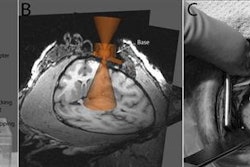Hemosiderosis is caused by the accumulation of too much iron, usually in the form of hemosiderin. Often found in tissue in the liver and spleen, it has been linked to repeated blood transfusions.
Researchers from McGill University Health Centre in Montreal collected 52 abdominal MRI scans from the institution's database that fit the study's criteria. Each MRI was reviewed for evidence of adrenal, liver, spleen, and bone marrow iron deposition, and the data were correlated with serum ferritin levels.
They found 19 cases (37%) with evidence of adrenal gland iron deposition. Of those, 18 (95%) had hepatic involvement, 18 (95%) had splenic involvement, and 14 (74%) had marrow involvement.
While no patients had solitary adrenal gland involvement, six (32%) had mild iron overload and five (26%) had moderate iron overload. In addition, eight patients (42%) had severe iron overload based on ferritin levels.
"It is important to consider that iron homeostasis remains a complex multifactorial process. Our study was more directed at imaging findings than functionality," Dr. Michele Perillo told AuntMinnie.com. "Perhaps as more radiologists are sensitized to this finding and as its detection increases, more advanced clinical and laboratory evaluation of patients with this adrenal gland iron deposition can lead to clinical advances."



















